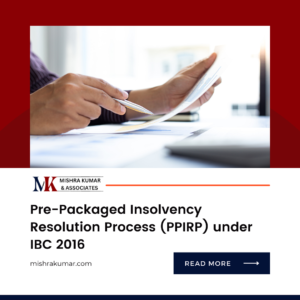Buy-back and Reduction of Capital
Corporate restructuring is a strategic process used by businesses to enhance their financial stability, optimize their capital structure, and return value to shareholders. Two important components of corporate restructuring are share buy-backs and capital reduction. In this blog, we will delve into these concepts, provide a detailed analysis of the processes, and discuss their implications for companies and their shareholders.
INTRODUCTION
Corporate restructuring is a strategic process used by businesses to enhance their financial stability, optimize their capital structure, and return value to shareholders. Two important components of corporate restructuring are share buy-backs and capital reduction. In this blog, we will delve into these concepts, provide a detailed analysis of the processes, and discuss their implications for companies and their shareholders.
ANALYSIS
Understanding Share Buy-backs and Capital Reduction
1. Share Buy-backs:
A share buy-back, also known as a stock repurchase, is a corporate action where a company purchases its own outstanding shares from the open market or directly from its shareholders. This can be done through various methods, such as open market purchases, tender offers, or off-market buy-backs. Key points to note about share buy-backs include:
Motivation: Companies often engage in share buy-backs to return excess cash to shareholders, signal financial strength, or enhance earnings per share (EPS).
Benefits: Buy-backs can increase the ownership stake of existing shareholders, improve stock price stability, and provide a means to manage excess cash.
2. Capital Reduction:
Capital reduction is a financial maneuver that reduces a company’s capital base, typically by reducing the nominal or par value of its shares, returning capital to shareholders. This can be achieved through various methods, including:
Cancellation of Shares: The company cancels a portion of its issued shares, reducing the total outstanding shares and capital.
Reduction of Par Value: The company reduces the nominal or par value of its shares, which has the effect of reducing its capital base.
Benefits of Share Buy-backs and Capital Reduction
Share Buy-backs:
Enhanced Shareholder Value: Share buy-backs can boost the value of existing shares by reducing the number of outstanding shares, effectively distributing company assets among fewer shareholders.
Capital Optimization: Companies can efficiently utilize excess capital, improving financial efficiency.
Signaling Financial Strength: Engaging in buy-backs can signal financial health to investors and markets.
Capital Reduction:
Return of Capital: Capital reduction allows companies to return surplus capital to shareholders, which can be attractive to investors.
Improved Financial Ratios: Reducing the capital base can improve financial ratios, such as return on equity (ROE).
Streamlined Operations: A leaner capital structure can make a company more agile and efficient.
Challenges of Share Buy-backs and Capital Reduction
Regulatory Compliance: Both share buy-backs and capital reduction often require compliance with legal and regulatory requirements, which can be complex.
Impact on Financials: Companies must carefully assess the impact of these actions on their financial statements and communicate the rationale clearly to shareholders.
Market Perception: Share buy-backs and capital reduction can influence market perception, and their execution should align with the company’s strategic objectives.
CONCLUSION
Share buy-backs and capital reduction are valuable tools for optimizing capital structure, enhancing shareholder value, and signaling financial health. Companies must carefully evaluate these strategies, taking into account their financial position, regulatory considerations, and communication with shareholders. When executed thoughtfully, they can contribute to the long-term stability and competitiveness of a business.
FAQs
Q1: Are there restrictions on the number of shares a company can buy back?
- Yes, restrictions on the number of shares and the frequency of buy-backs can vary by jurisdiction and are often subject to regulatory limits.
Q2: Can share buy-backs and capital reduction be used in combination?
- Yes, companies can use both share buy-backs and capital reduction in combination as part of their capital optimization strategy.
Q3: Do shareholders have to approve share buy-backs and capital reduction?
- Shareholder approval is typically required for significant buy-backs or capital reduction, depending on the company’s bylaws and relevant regulations.
Q4: Are there tax implications for shareholders in share buy-backs and capital reduction?
- There can be tax implications for shareholders, and these can vary depending on the jurisdiction and the specific circumstances. Shareholders should consult tax advisors for guidance.
RECENT POSTS
- The implication of Stamp Duty on Scheme of Arrangement (Merger & Amalgamation):
- Pre-Packaged Insolvency Resolution Process (PPIRP) under IBC 2016
- BUY BACK OF SHARES V/S DIVIDEND
- Comprehensive comparative analysis of SEBI (Listing Obligations and Disclosure Requirements) (Second Amendment) Regulations, 2021.
- SEBI (Delisting of Equity Shares) Regulations, 2021-Imposes new responsibilities on the board of directors.

The implication of Stamp Duty on Scheme of Arrangement (Merger & Amalgamation):
The implication of Stamp Duty on Scheme of Arrangement (Merger & Amalgamation): The Scheme of Arrangement is a legal mechanism under corporate law that allows

Pre-Packaged Insolvency Resolution Process (PPIRP) under IBC 2016
Pre-Packaged Insolvency Resolution Process (PPIRP) under IBC 2016 The Insolvency and Bankruptcy Code (IBC) 2016, is a comprehensive legislation aimed at consolidating and amending laws

BUY BACK OF SHARES V/S DIVIDEND
BUY-BACK OF SHARES V/S DIVIDEND A dividend offers cash rewards to all shareholders in accordance with their stake in the company, whereas a share buyback

Comprehensive comparative analysis of SEBI (Listing Obligations and Disclosure Requirements) (Second Amendment) Regulations, 2021.
Comprehensive comparative analysis of SEBI (Listing Obligations and Disclosure Requirements) (Second Amendment) Regulations, 2021. Securities and Exchange Board of India (“SEBI”) vide notification dated May

SEBI (Delisting of Equity Shares) Regulations, 2021-Imposes new responsibilities on the board of directors.
SEBI (Delisting of Equity Shares) Regulations, 2021-Imposes new responsibilities on the board of directors. Securities and Exchange Board of India (“SEBI”) vide notification dated 10th

Summary of Insolvency and Bankruptcy Board of India (Liquidation Process) (Amendment) Regulations, 2024
Summary of Insolvency and Bankruptcy Board of India (Liquidation Process) (Amendment) Regulations, 2024 The Insolvency and Bankruptcy Board of India (IBBI) recently issued amendments to

